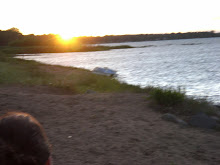
I've been doing some thinking recently about roots, being anchored in who one is, regardless of where one lives. Anchors have a rich history as a symbol of staying power. I read about the image above that it was particularly popular as a grave-stone symbol for early Christians, who would use it to disguise crosses, or to reference Hebrews 6:
17 Wherein God, willing more abundantly to show unto the heirs of promise the immutability of his counsel, confirmed it by an oath:
18 that by two immutable things, in which it was impossible for God to lie, we might have a strong consolation, who have fled for refuge to lay hold upon the hope set before us:
19 which hope we have as an anchor of the soul, both sure and steadfast, and which entereth into that within the veil;
20 whither the forerunner is for us entered, even Jesus, made a high priest for ever after the order of Melchiz'edek.

The symbol is, on the surface, a simple one. Literal anchors keep boats from floating away on the open sea. They are a physical representation of safety, ensuring that nothing is lost.

I feel like I need to go to this restaurant! The food be what it may, I am a sucker for a well-named establishment, especially one that appeals to my overdeveloped sensitivity to symbols. The name of this place, "Anchor and Hope", reinforces that Hebrews 6 connection that I find personally rich and meaningful.
*Question that came up in conversation last night: Do things rust quicker or slower at the bottom of the ocean than they do at the surface? We thought that the water (duh) and salt might speed up the process, but that the pressure and temperature might slow it down....

A picture I took on our first visit to Gloucester. Seems I've had anchors on the brain longer than I'd realized.
